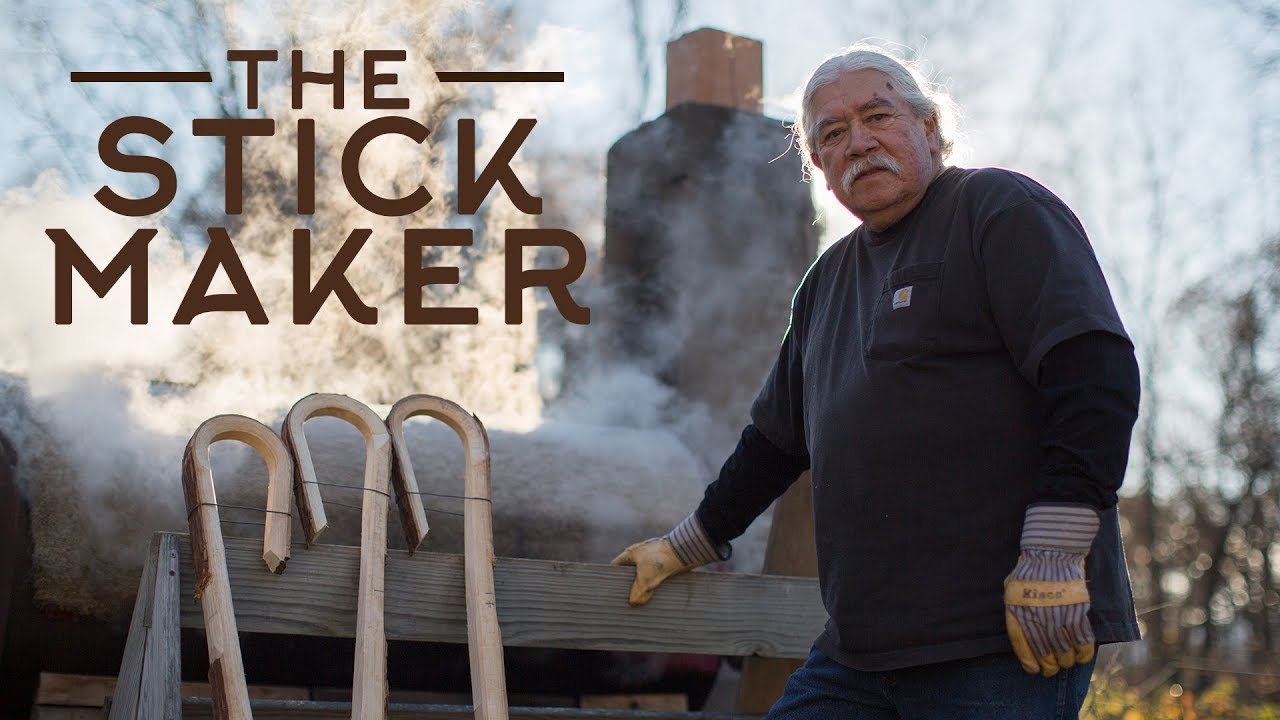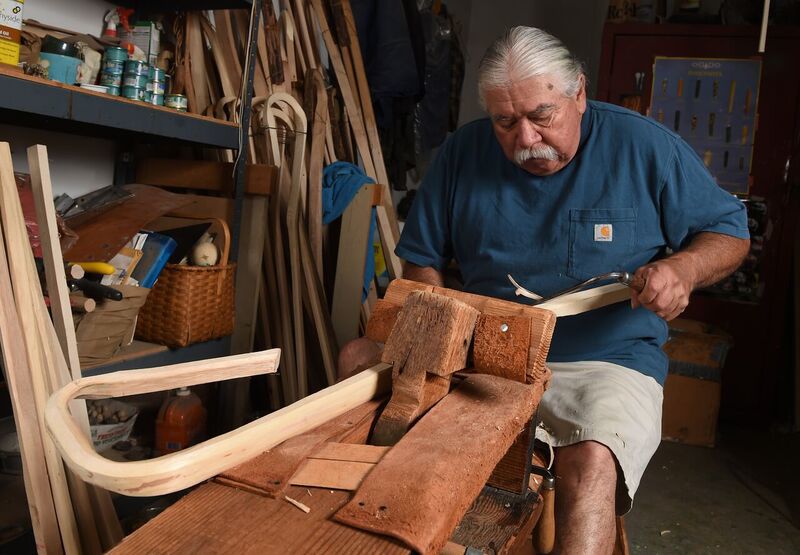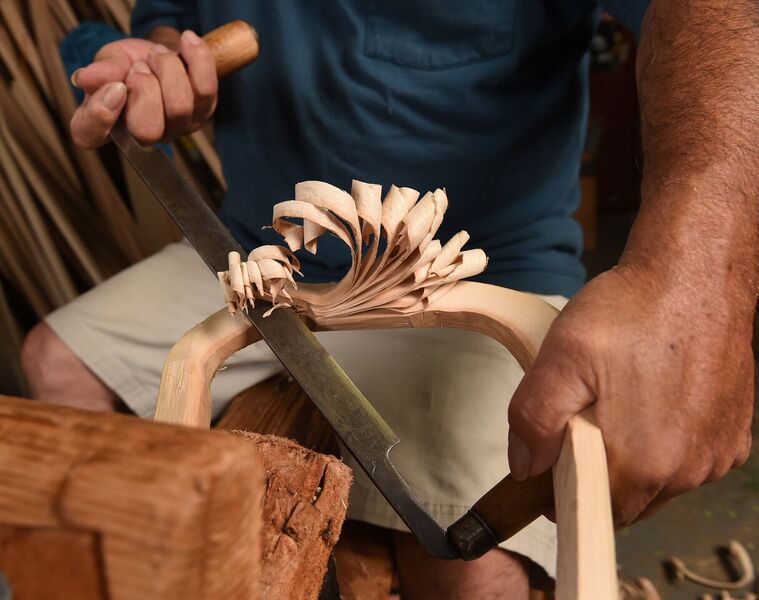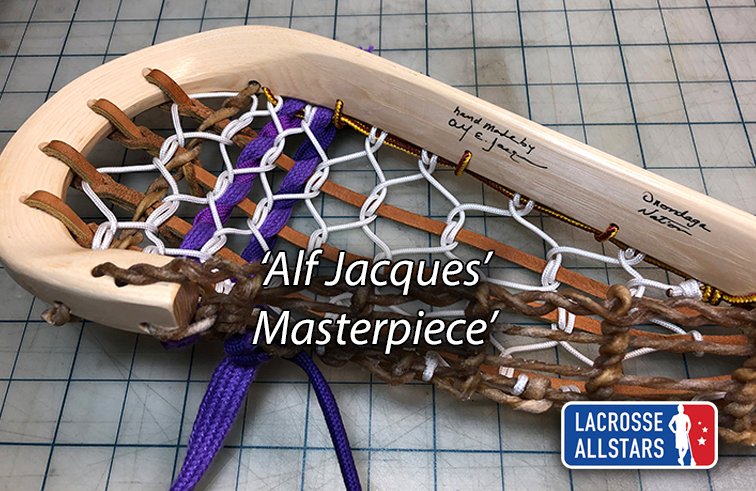The Making of the Wooden Lacrosse Stick
22 de Octubre de 2021 a las 15:45
Photo courtesy of US Lacrosse
Article by Gary Groob IG: @ggroob
Columnist & Co-Host at Spanglish World Networks and Spanglsh Sports World
TORONTO. - Looking at the history and tradition of the game, I thought this week we would look at the process of making the wooden lacrosse stick. All the love, effort, and craftsmanship that makes a quality stick. In the modern game, we have gotten used to everyone using plastic sticks, manufactured by machine, but still strung by hand, but that wasn't the lineage that the game came from. From the beginning of the Creator's game, it was always wooden sticks used, created by talented men such as Alfie Jacques.
A few years ago I had the privilege of going to a wooden stick festival in Onanadaga, New York. I met up with Alfie, who was kind enough to take the time to both tell me, and show me what went into designing and building the wooden lacrosse stick.
Jacques has been (and is) the premiere manufacturer of hand made wooden lacrosse sticks for over fifty years. Based in Onandaga nation (just outside of Syracuse, NY), people come from all over the world to buy his sticks.
The process of making a wooden Lacrosse stick is quite amazing, and a heck of a lot of work:

Photo courtesy of John Berry, The Buffalo News
The first thing Alfie does is cuts down a Shag Bark Hickory Tree with no branches for eight feet of trunk (which means the trees are usually 75 years or older). Although Oak is a tough wood, when hammering a nail into the wood, Oak will split, Hickory doesn't have that problem, Hickory will actually bend the nail...it's that hard of a wood.
The next step is spliting the tree into wedges which takes about two to three months to dry. Alfie uses a big metal axe and wooden mallets to split the wood.

The next step is spliting the tree into wedges which takes about two to three months to dry. Alfie uses a big metal axe and wooden mallets to split the wood.

Photo courtesy of John Berry, The Buffalo News
Then comes carving the stick. Carving takes about a month.
Next, Alfie steams the sticks to get the bend in them. Although it seems like there would be leverage to do so, it really is a tough task to get it just right. This takes another month (depending how humid the weather is) for the sticks to dry and take. When Alfie bends the sticks he uses wire (like hanger wire) placing it from the head to the shaft to keep it from moving.
Another piece of information is that he uses the end closest to the trunk of the tree to bend, the reason is that the other end is just too stiff to maneuver.

Next, Alfie steams the sticks to get the bend in them. Although it seems like there would be leverage to do so, it really is a tough task to get it just right. This takes another month (depending how humid the weather is) for the sticks to dry and take. When Alfie bends the sticks he uses wire (like hanger wire) placing it from the head to the shaft to keep it from moving.
Another piece of information is that he uses the end closest to the trunk of the tree to bend, the reason is that the other end is just too stiff to maneuver.

Photo courtesy of Alexandra Moreo, CraftCouncil.org
The sticks then get hand strung.
The entire process takes about ten months to make a quality stick.
On a side note, nothing from the tree goes to waste. If pieces are not being used in the stick, they are used for the steaming process (heating up the water to make steam).
Jacques works six days per week and crafts roughly 200 sticks per year, down from a peak of nearly 12,000 per year in the early 1970s, when he worked with his father.
“It’s getting harder to do but it’s not debilitating,” said Jacques, explaining the toll the work takes on his right hand and shoulder. “I can still do everything, I can still make a perfect stick, but it’s getting harder to do.”

The entire process takes about ten months to make a quality stick.
On a side note, nothing from the tree goes to waste. If pieces are not being used in the stick, they are used for the steaming process (heating up the water to make steam).
Jacques works six days per week and crafts roughly 200 sticks per year, down from a peak of nearly 12,000 per year in the early 1970s, when he worked with his father.
“It’s getting harder to do but it’s not debilitating,” said Jacques, explaining the toll the work takes on his right hand and shoulder. “I can still do everything, I can still make a perfect stick, but it’s getting harder to do.”

Photo courtesy of art.laxallstars.com
Jacques signs all of his sticks, but showing his sense of humor he smiled when telling me, when he makes a left handed stick he signs it backwards.
For about $300 U.S. one of these beauties could be yours, but be prepared to wait a bit, as Alfie continually receives orders from all over the world. But I assure you it is well worth the wait for a quality stick from the master himself.
For about $300 U.S. one of these beauties could be yours, but be prepared to wait a bit, as Alfie continually receives orders from all over the world. But I assure you it is well worth the wait for a quality stick from the master himself.




Comentarios
escribenos